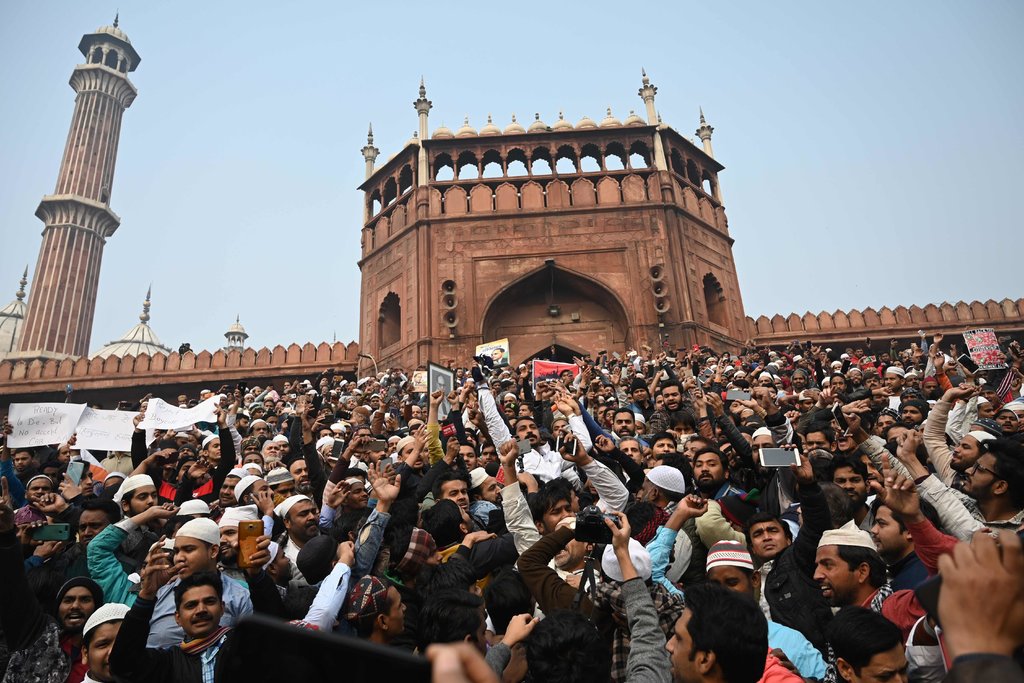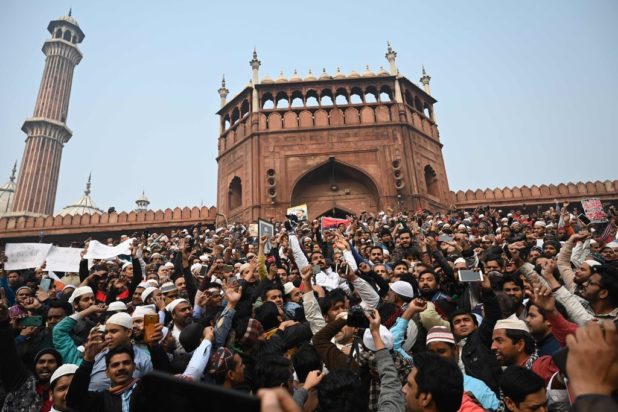Andrew Anglin
Daily Stormer
December 20, 2019
Being “secular,” like being “anti-racist,” is simply a denial of your own identity and group, and thus a means to transfer power to another collective group.
Power in society is a zero sum game.
“Secular” Indians – who most likely are from Hindu backgrounds – who attack Modi for not giving Moslems citizenship might as well convert to Islam, as that is who makes the power gains.
The fact that you personally believe in whichever kind of bullshit egalitarianism doesn’t matter, because that isn’t real life.
Wearing Muslim skullcaps, colorful turbans of Indian Sikhs or hip beanies of secular university students, thousands protested at the largest mosque in India’s capital on Friday, a turbulent scene that played out in multiple cities across the country. They defied government curfews, internet shutdowns and the divisive politics that have kept them apart for years.
The unrest, now in its second week and increasingly violent, started over a contentious citizenship law that favors every other South Asian faith over Islam. It has since evolved into a broader fight over what demonstrators say is an increasingly authoritarian government bent on dismantling India’s foundation: a secular nation that draws strength from its diversity.
I used to laugh when the Jewish media would unironically say “diversity is our strength.”
Now I just shout “nigger!”
In the 1940s, India fought a war and millions of people died because of conflict between Moslems and everyone else. Diversity causes mass death, and that is a fact. It isn’t something we have to wonder about.
“You just needed a trigger,” said Jasbir Singh, a Sikh information technology worker who joined the protests in Bangalore this past week. “In India, religion never decided your citizenship, and it should not in the future.”
More and more people are pouring into the streets, and many have clashed with police officers. On Friday, six protesters were killed in several towns in northern India, according to officials and the Indian news media, as officers used water cannons, tear gas, wooden sticks and — according to some reports — live ammunition against the demonstrators. At least 14 lives have been lost since the first protests erupted.
The protests have emerged as the biggest challenge yet to Prime Minister Narendra Modi and his agenda. His governing Bharatiya Janata Party has not shied away from articulating its vision of India as a homeland for Hindus.
Mr. Modi has tried to play down the diversity of the crowds, describing the protesters last Sunday as disgruntled Muslims and saying that they could be “identified by their clothes.” But the anger over the law is widespread, with Indians of various political stripes, creeds and backgrounds worried that one religion could become dominant.
I tend to think that is being exaggerated by the New York Times.
Even the NYT header image looks like mostly Moslems:
I don’t think those are “hipster beanies,” lol.
But yes, I am sure there are some people, high on Western Jewish propaganda, who are not Moslems but are out there white knighting for them.
It has galvanized university students, mirroring a pushback against conservative forces around the world. It has drawn in activists, intellectuals and professionals, continuing a long tradition of protests in India.
And it has prompted a global backlash. The United Nations and various rights groups condemned the law, while some American lawmakers called for sanctions.
Look, they even mention the partition!
“Those who want to implement discriminatory laws want to do a second partition, as if the millions dying in the first one wasn’t enough,” said Mr. Singh, the technology worker, referring to the bloody sectarian violence that unfolded in 1947 when the subcontinent was split, establishing India and Pakistan. “After seeing so many people protesting in Mumbai and Bangalore yesterday, I feel that old India is still alive.”
Why did the partition happen?
Well, it was because of Islamic violence, of course.
Why else?
For India’s Muslim population, the protests are deeply personal. Muslims have watched the rise of Hindu nationalism under Mr. Modi with a wary eye.
Dozens of Muslims have been lynched by angry Hindu mobs, with the perpetrators often walking free. The country’s only Muslim-majority state, Jammu and Kashmir, was stripped of its autonomy in August, and thousands of young men and elected politicians were detained without being charged. And the Supreme Court, in a case known as “Ayodhya,” ruled that a temple could be built at the site where a centuries-old mosque once stood before a Hindu mob tore it down.
Until now, Muslims had largely remained quiet, hoping that sectarian relations could be restored. But when the government passed the citizenship law this month, many felt they had to mobilize or risk losing even more.
All the law does is prevent Moslems living in the country to apply for citizenship.
It doesn’t strip the ones who already have citizenship of citizenship.
No one needs more Moslem citizens – especially not a country with the history that India has.
This situation is just dumb.
Moslems already have Pakistan and Bangladesh – they should go live there.

